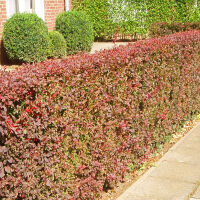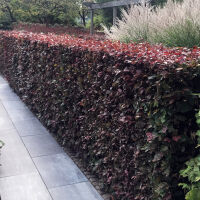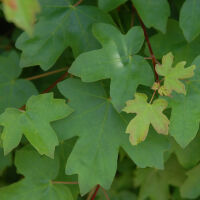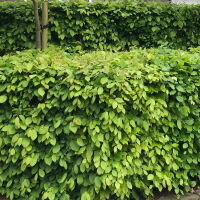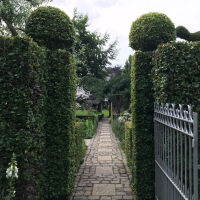deciduous hedge plant
Deciduous hedging plants - an enrichment for every garden style
Hedge plants are garden shrubs that are pruning tolerant and malleable, making them suitable for creating a hedge. There are deciduous, deciduous hedge plants and evergreen plants that are suitable for creating a hedge. Hedges fulfil several functions and can be used in many ways. The following article describes the importance of deciduous hedge plants in garden design, when is the best time to plant them and which plants are best suited for this purpose.
The importance of hedge planting in garden design
Deciduous hedge plants are an asset to any garden and at any time of year. When the first buds sprout and the flowering hedge comes to life, it is a sign that spring has arrived. In summer, the hedge plants beautify the garden borders with their lush green, and in autumn, when the leaves turn colour, the observer is presented with a wonderful play of colours. The leafless branches of a dense hedge can also be very attractive in winter when they are covered with snow and frost. However, if the hedge is to create a permanent visual screen, an evergreen deciduous hedge is more suitable. Boxwood, privet or cherry laurel, for example, are suitable for this. Conifers for coniferous hedges, such as evergreen conifers, yews and arborvitae, are also suitable for a privacy hedge. A hedge planting not only serves as a visual screen from the outside and as a boundary from the outside (living fence), it also protects against draughts and also serves as a noise barrier and as a source of shade, plus it improves the microclimate. Hedge planting also serves as a shelter and habitat for birds and animals. Especially if you place great value on an attractive visual screen in summer, but want more light in the garden in winter, these hedges are a great option.
Deciduous hedging plants - the perfect planting time
The months of October, November, March and April are best for planting a garden hedge, as they stop bearing leaves in autumn and the ground is not yet frozen, and in spring the hedge plants have not yet sprouted. Deciduous hedges are best pruned in late winter, from the end of February or beginning of March. Midsummer is rather unsuitable as a planting time, as evaporation through the leaves or needles is very high at this time, and therefore the sap would be drawn from the roots of the plants. If hedges are nevertheless planted in late spring or summer, a higher level of care must be expected initially, as the plants must be prevented from drying out by watering more frequently during this period. Basically, however, hedges are very undemanding and easy to care for. The hedge has very extensive roots and can thus draw all the important nutrients from the soil very well. Other deciduous hedge plants are, for example: Red-leaved barberry, copper beech, deutzia, copper beech or hornbeam.
Deciduous hedging plants for hedge planting
A beech hedge (hornbeam, hornbeam, copper beech) is suitable for a particularly dense and compact hedge planting. The beech hedge is one of the most popular hedge plantings because it is pruning tolerant and grows quickly. With this type of hedge, the discoloured foliage remains on the hedge until the following spring, so the beech hedge also makes a great visual screen in winter. Both the hornbeam and the copper beech thrive in a semi-shady and a sunny location. The hornbeam is very soil-tolerant, it does well in moderately dry to moist soil, as well as in calcareous or acidic sandy and clay soils. The copper beech is somewhat more demanding, preferring a nutrient-rich soil with a high clay content. Both beech species are perfect as garden hedges.
The hibiscus hedge - perfect privacy screen and flowering splendour
Hibiscus hedges bloom from June to September in a wide variety of colours. The different varieties can be wonderfully combined with each other. Perfectly suited as a hibiscus hedge is the hardy and pruning-tolerant garden marshmallow or rose marshmallow and its various varieties. Shooting starts in May, this flowering hedge is an ideal privacy hedge and flowers seasonally. After a few years, the plants reach a height of between 150 and 200 cm.
